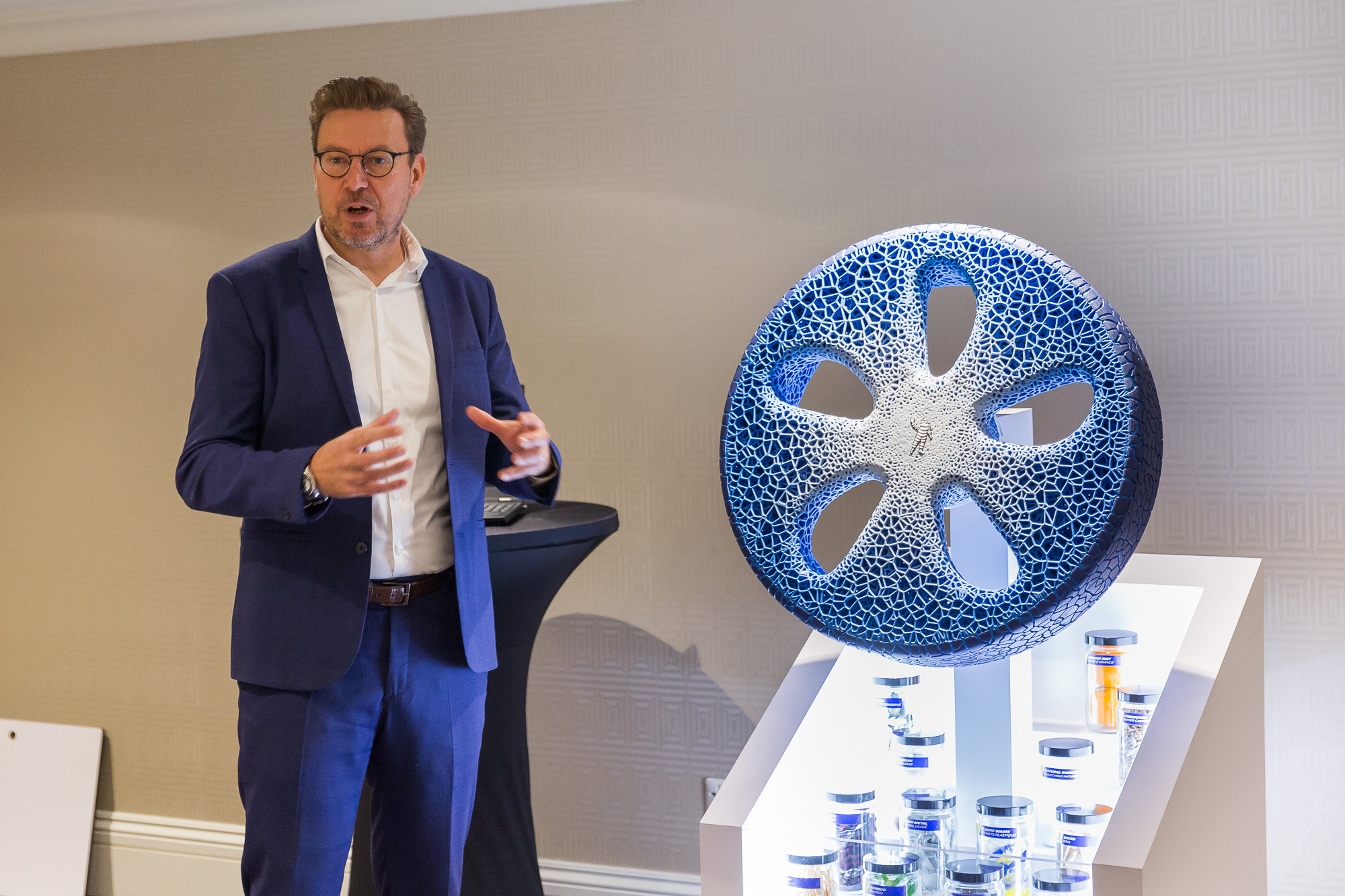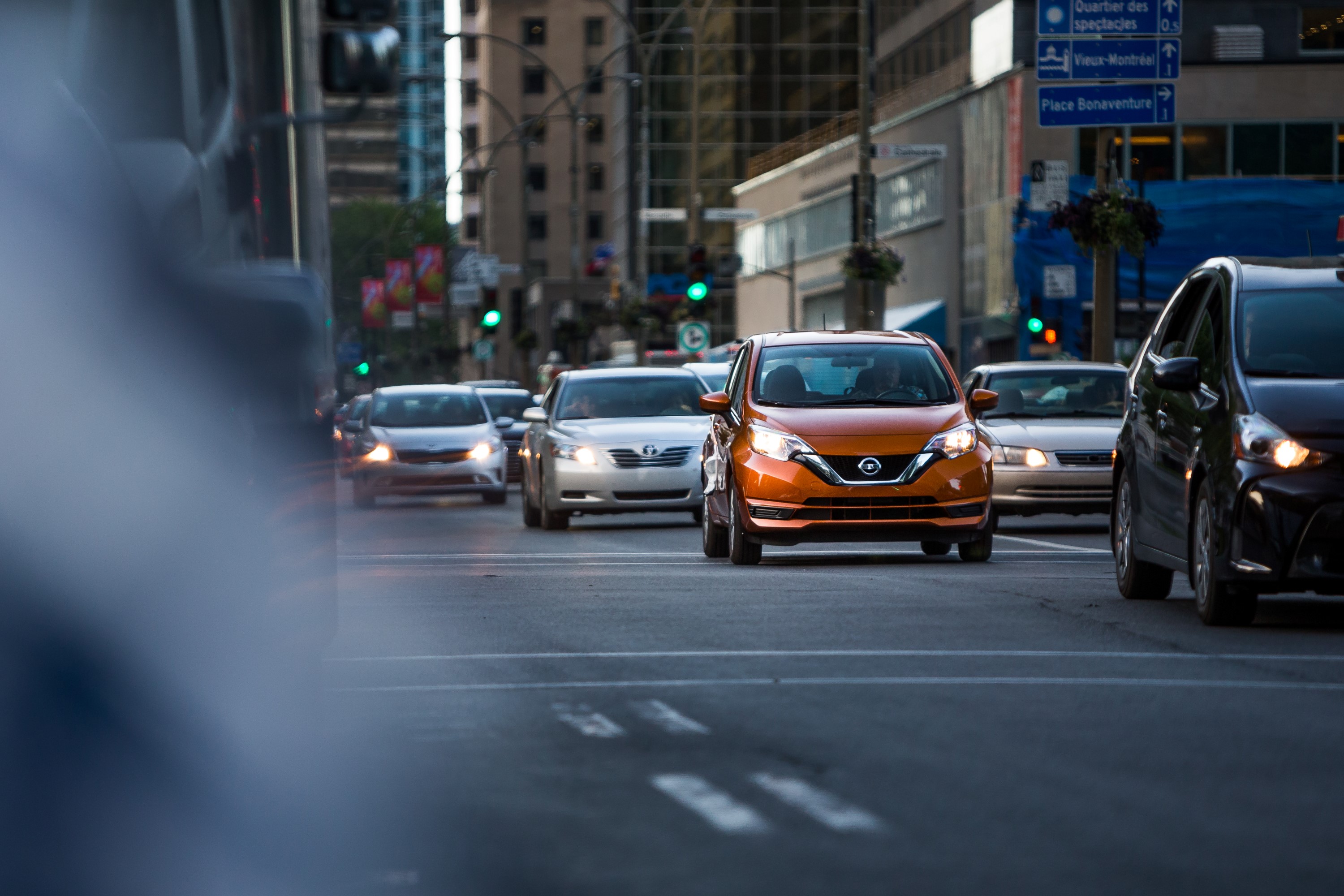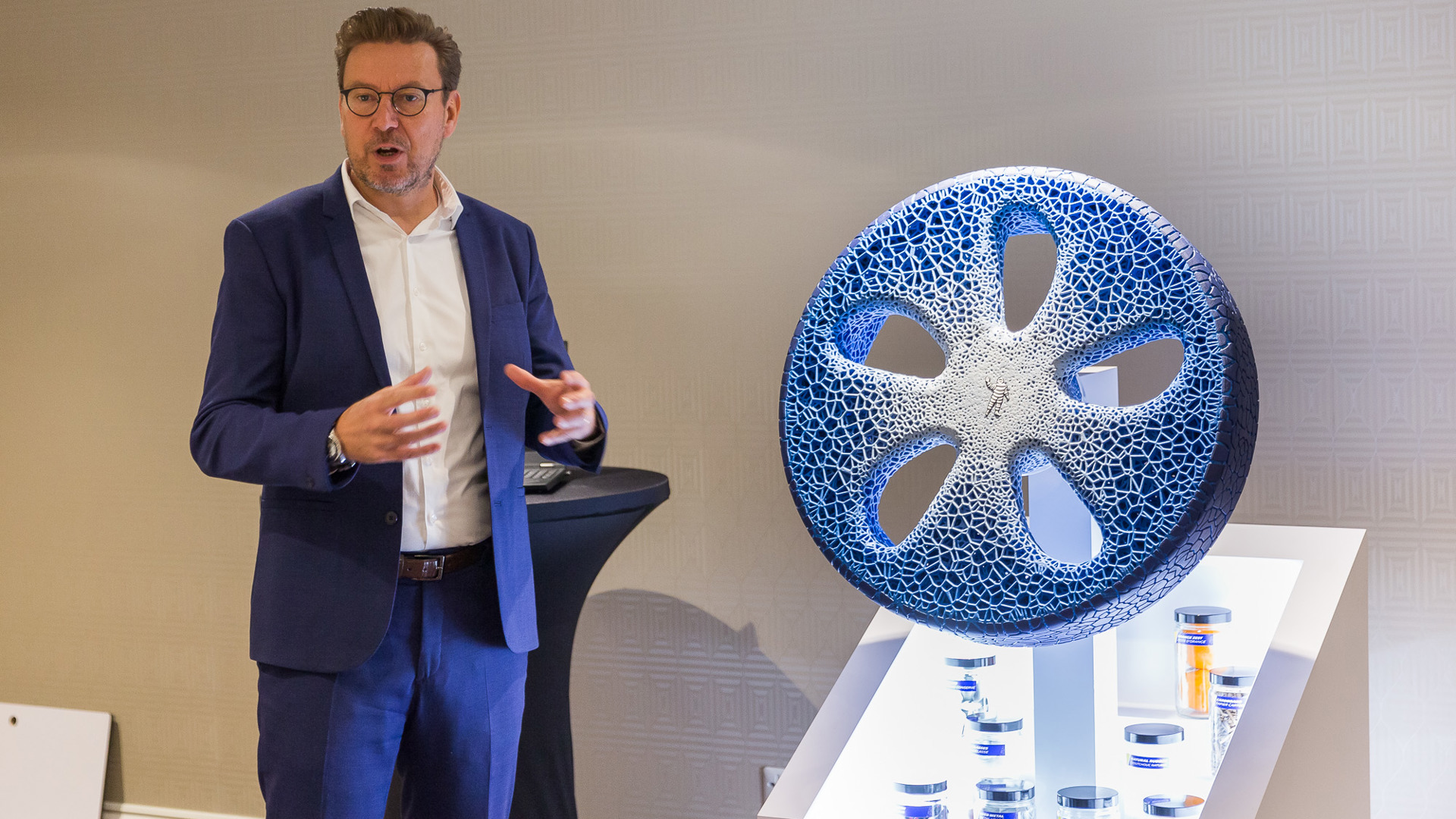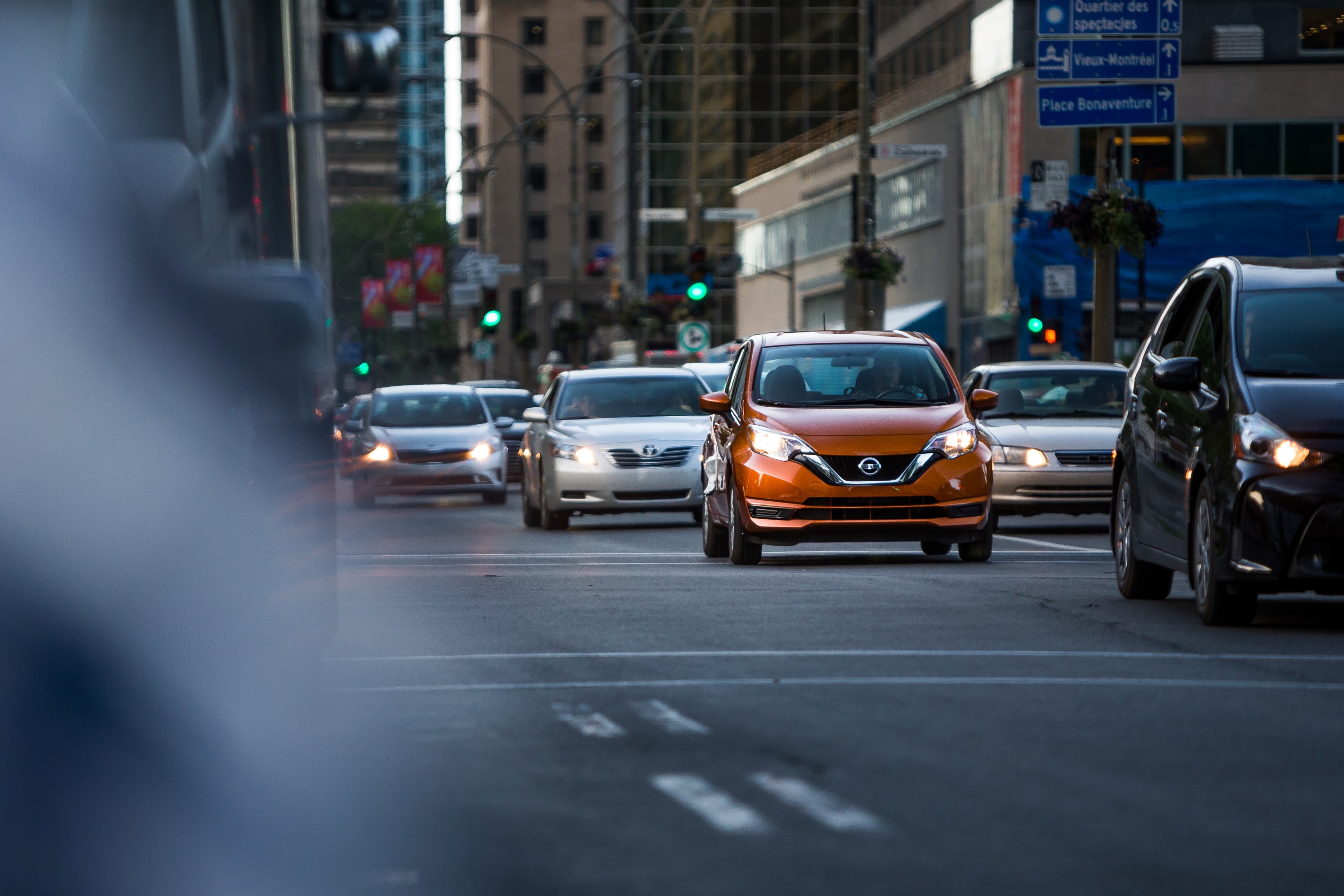Photos by Jordan Lenssen / AJAC
What a difference a few years makes.
Back in 2012, the Automobile Journalists Association of Canada hosted the first-ever EcoRun. It started in Brighton, Ontario, and concluded in London to cover roughly 350 km, and journalists spent two days largely driving vehicles with fuel-efficient gas-powered and traditional hybrid powertrains. The Chevrolet Volt was there, as were a couple of plug-in EVs, but not one vehicle could boast a total all-electric range of more than about 150 km. Still, it was a start, and it did its part in announcing that a schism was coming that could permanently change how we think about and shop for our vehicles.
Last week, the 2017 edition wrapped up after starting on the steps of the parliament buildings in Ottawa and covering approximately 570 km over two days on the way to its conclusion in Quebec City. This growth in distance of more than 200 km in six years is one of the hallmarks of what EcoRun best demonstrates about the evolution of green driving: with vehicles like the 2017 Chevrolet Bolt and its 383 km range on display alongside hydrogen fuel-cell power, diesels, plug-in hybrids, and gas-powered engines that are more fuel-efficient than ever, environmentally friendly driving has come a long way in a very short time.
Here are five takeaways from the 2017 EcoRun that show where we’ve come from and what we can look forward to as green driving continues to evolve.
1. Consumers suddenly have significantly more eco-friendly options.

This year’s field of entries included 19 cars, and unlike in past years, 18 of them could very realistically be found on Canadian driveways.
The aforementioned Bolt stands out, of course, with its ground-breaking combination of a healthy all-electric range and affordable price starting at $43,095 (all prices listed in this article are before provincial incentives). It also happens to be a pleasure to drive.
We were given a glimpse of some options with lower ranges but correspondingly lower prices as well, such as the Ford Focus Electric (185 km; starts at $31,248) and Volkswagen e-Golf (201 km; from $35,995).
Then there was the field of plug-in hybrids, which let you benefit from electric power while keeping the gasoline option on reserve for longer hauls. I spent some time in the Toyota Prius Prime, and I enjoyed its attractive interior, massive touchscreen infotainment system, and smooth driving dynamics – with a combined range of 1,035 km and a starting price of $32,990, it’s a shame this will only be available in Quebec at launch.
Traditional hybrids went all the way from the highly affordable and efficient new Hyundai Ioniq hybrid (from $24,299) all the way up-market to the Porsche Cayenne S E-Hybrid (from $90,400) and the hot new Lexus LC 500h sports car (from $118,750). The Kia Niro (from $24,995), a brand-new entry among a very thin field of hybrid compact and subcompact SUVs, showed very well in our testing, which will be highlighted in a future article here on autoTRADER.ca.
And for those not quite ready to make the jump, Mazda brought a CX-5 and an MX-5 RF to show off the capabilities of the company’s SkyActiv engines, Subaru put its next-generation Forester on display, and Nissan brought two Versa Notes – one with the manual transmission and one with the CVT, creating an interesting opportunity for a back-to-back fuel consumption comparison – as well as a Pathfinder, which with a combined rating from Natural Resources Canada of 10.2 L/100 km in two-wheel-drive mode is capable of pulling some surprisingly low figures for a seven-seater SUV.
The only vehicle entered in this year’s EcoRun that’s hard to make a case for today is the hydrogen fuel cell powered Toyota Mirai, and that’s only because hydrogen refuelling infrastructure is still extremely sparse in this country. But it looks more and more like that won’t be the case forever.
2. Hydrogen fuel cell technology may yet win the long game.

It’s being said in innovation circles that electric vehicles are filling an immediate need but that hydrogen fuel cell technology is a more viable long-term solution. It offers production options with minimal environmental impact, a refuelling method and timeframe more like the gasoline systems people are already used to, and a storage capability that today’s batteries can’t begin to approach.
While a commission formed by multiple automakers continues to lobby various levels of government to begin investing in the hydrogen refuelling network that’s needed to make the technology commercially viable, a Quebec university is conducting research into how to make it work in our harsh climes from a practical standpoint.
Our visit to the Hydrogen Research Institute at the Université du Québec à Trois-Rivières revealed several aspects of the work that’s ongoing as the industry attempts to make widespread hydrogen use a reality.
For example, one of the challenges of operating a hydrogen vehicle in most of Canada is that its by-product is water, which can freeze within the exhaust system and cause damage. In response, researchers showed us an environment they’ve created that allows them to test and refine various aspects of a hydrogen powertrain’s operation at –30 Celsius. They’re also working on how to combine hydrogen power generation with an on-board battery set-up that can accept regenerative power input to extend a vehicle’s range even further.
There are still some hurdles to overcome, but the knowledge that this work is ongoing makes the long-term prospects of hydrogen power look ever more promising.
3. The greening-up story doesn’t end at powertrains.

We talk about engines and electrons a lot where fuel economy and environmental friendliness are concerned, but there’s one aspect of our cars with potential that’s frequently ignored: those four little patches that are your only connection to the road, the tires.
There are a couple of ways that tire production could ease its load on the planet. One is through use of materials and tread design that give tires less rolling resistance and therefore more retained momentum, thereby increasing fuel economy. Bridgestone’s Ecopia line of tires comes to mind as an example.
Another is through a more judicious use of materials, either via more easily renewable source materials or a much more liberal use of recycled materials.
Michelin joined us on EcoRun to demonstrate a concept tire detailing that very idea: the Vision tire is an idea for a completely airless, 3D-printed tire made entirely from materials that are either recycled or biodegradable such as paper, crumbs of old tires, wood, plastic waste, used metal, bamboo, hay, molasses, and others. The tire’s interior architecture is very open, making it roughly the same weight as a conventional tire-and-wheel combination, and is capable of supporting the weight of a modern vehicle. It can also be adjusted for changing needs – in theory, when it’s time to change to winter tires, rather than buying an entirely separate set you’d simply make an appointment with Michelin to have your current set’s treads reprinted.
Sometimes, the future still really does seem wondrous.
4. To truly commit to green driving, we need to invest in traffic reduction.

On the final leg of the first day of EcoRun I was driving the Nissan Pathfinder into Montreal, which is a vehicle I have experience with, and so I was pleased but not especially shocked when it was hauling its roughly 2,100 kg along Autoroute 15 at an average of 7.3 L/100 km. (Granted, this figure came about with the help of coasting down hills in neutral, turning off the air conditioning, and other tricks we all use on this event in our attempts to claim the coveted Green Jersey, which – due to my refusal to drive at 20 km below the speed limit – I never manage to win.)
But, as so often happens when one approaches the island at around 4:30 PM or so, we all got to within about 3 km of Laval and came to an utterly grinding halt.
Our organizers did their best to help us out by sending us downtown via some side streets (Jean-Talon and Parc, for those interested). But the Alouettes Canadian Football League team were playing a preseason game against the reigning Grey Cup champion Ottawa Redblacks that night on top of the various other summer festivals going on, so pretty much every route into the city was a hopeless cause. After spending about an hour navigating stop-and-go traffic, I pulled the Pathfinder into its final parking space at a relatively demoralizing 8.8 average.
For the sake of argument, let’s do some simple math on this. Pretend for a moment that it would be possible to get from Blainville, north of Laval, to downtown Montreal via Autoroute 15/40/720 with zero traffic in 30 minutes. (I’ll wait while the Montrealers catch their breath from laughing.) Maybe it’s a warm day and you run the AC for a little while, but cruising along at 100 km/h allows you to reach your destination at an all-highway average of, I don’t know, 7.8 L/100 km. In this Pathfinder, that’s a reasonable estimate.
Now, on that day in mid-June, it took me an hour to travel that same distance at an average of 8.8. (And that includes a highway cruising portion of driving at the start; the actual number for this segment on its own would be higher, but let’s use this number for simplicity.)
The distance between Blainville and my downtown destination was 40 km. Based on these figures, that means that if I’m commuting back and forth in similar levels of traffic in any one given day, I’m using an estimated 0.8 L more in fuel than I would be if there were none.
Over a five-day work week, that’s 4.0 L of fuel spent on highway congestion alone. Over an average of 250 work days in a given year, that’s 200 L of fuel. That’s the equivalent of a little more than 460 kg of carbon dioxide being added to the atmosphere each year by the daily traffic in this one vehicle’s commute.
Yes, this is imperfect math. But however imperfect it is, multiplying is by a million or so to estimate the impact in cities around the world is eye-opening. And we’re using a relatively fuel-efficient vehicle as an example; there are plenty of gas-guzzlers doing much more damage.
This is why we hear so much these days about car-sharing, electrification, and all the rest of the proposed city driving solutions. Our simple demonstration shows that reducing congestion is one relatively immediate way that cities can make an impact on carbon emissions without having to wait for technology to catch up, be it through better public transit solutions, shifting road works to off-peak hours more often, using high-occupancy vehicles lanes to encourage carpooling – and, ideally, other brilliant ideas that no one has thought of yet.
No one likes traffic, but the Earth hates it most of all. While we wait for cars to evolve, this is a simple and potentially effective place to start.
5. How much do we really need all-wheel drive?

SUVs are a hot topic right now in Canada, and the Nissan Pathfinder generated another point of discussion that comes up often with our country’s consumers.
The Midnight Edition Pathfinder we were driving, as with some other models, comes with a simple selector that allows the driver to change between two-wheel and four-by-four drive, either auto or locked, on a moment’s notice.
Where Nissan wanted us to keep the dial for the purpose of EcoRun, of course, was on 2WD – that’s easily where the Pathfinder sees its best fuel economy.
But Canadians are buying up SUVs in droves right now, and why? Because they think they need all-wheel drive.
Sure, it comes in very handy on those three or four days a year when you need to get over the snowplow detritus at the end of your driveway and rush off to work. But for most people, that’s the full extent to which they utilize these systems. On rain-slicked or flurry-dusted roads, AWD will help you a little while getting going. But traction control systems have come a long way, and between those and a good set of weather-appropriate tires, you can get where you need to in a straight line most of the time with a bit of prudence.
The ideal solution in our harsh climate is having the on-board option for both: AWD or 4WD available when you need it but the ability to keep 2WD enabled most of the time to help save on fuel. Some vehicles, such as the Pathfinder, put that control in your own hands; others do the switching for you behind the scenes with varying rates of effectiveness.
Doing your research on how these systems work in the vehicles you’re interested in – rather than just believing the hype that all-wheel drive is automatically better and necessary – can go a long way in reducing your car’s greenhouse gas emissions and saving you money at the pumps.






